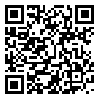Volume 7, Issue 6 (2-2012)
J Health Syst Res 2012, 7(6): 0-0 |
Back to browse issues page
Download citation:
BibTeX | RIS | EndNote | Medlars | ProCite | Reference Manager | RefWorks
Send citation to:



BibTeX | RIS | EndNote | Medlars | ProCite | Reference Manager | RefWorks
Send citation to:
حسن هاشمي, محمدمهدي امين. مطالعه قابلیت فعالیت مجدد نوری باکتریهای شاخص در پساب پرتوتابی شده تصفیهخانه فاضلاب شهری. J Health Syst Res 2012; 7 (6)
URL: http://hsr.mui.ac.ir/article-1-306-en.html
URL: http://hsr.mui.ac.ir/article-1-306-en.html
1- Faculty Member, Department of Environmental Health Engineering, School of Health, Shahrekord University of Medical Sciences, Shahrekord, Iran
2- Associate professor, Environment Research Center, Isfahan University of Medical Sciences, Isfahan, Iran
2- Associate professor, Environment Research Center, Isfahan University of Medical Sciences, Isfahan, Iran
Abstract: (1392 Views)
Background: Photoreactivation of microorganisms following UV disinfection is a disadvantage of using UV technology for wastewater treatment, since in some cases it may even reach several logarithms. The aim of this study was to evaluate the possibility of the photoreactivation of indicator bacteria (coliform and streptococci) in the irradiated effluent.Methods: This study was performed using three alternatives: (1) low-pressure (LP) + medium-pressure (MP) UV lamps, (2) clarifier + LP + MP, and (3) pressurized sand filter + LP + MP. Moreover, total coliform (TC), fecal coliform (FC), fecal Streptococcus (FS), TSS, absorptivity and UV transmittance (UVT; %) were tested.Findings: The UVT% for secondary, clarified and filtered effluents were 3.5, 34 and 50, respectively. A 15% photoreactivation in secondary effluent disinfected by LP lamp was observed, while it was limited to 0.03% by the MP lamp after filtration. The highest photoreactivation of coliforms was observed after disinfection of secondary effluent with low-pressure lamps (15%) and the lowest photoreactivation was observed after filtered effluent disinfection with medium pressure lamps (0.03%). Conclusion: It is concluded that the type of UV lamp used for wastewater treatment plants, as regarding photoreactivation of total coliforms, is not critical as long as the applied germicidal UV dose is greater than 230 mJ/cm2.
Type of Study: Research |
Subject:
education health and promotion
Received: 2020/07/16 | Accepted: 2023/03/4 | Published: 2023/03/4
Received: 2020/07/16 | Accepted: 2023/03/4 | Published: 2023/03/4
| Rights and permissions | |
 |
This work is licensed under a Creative Commons Attribution-NonCommercial 4.0 International License. |





